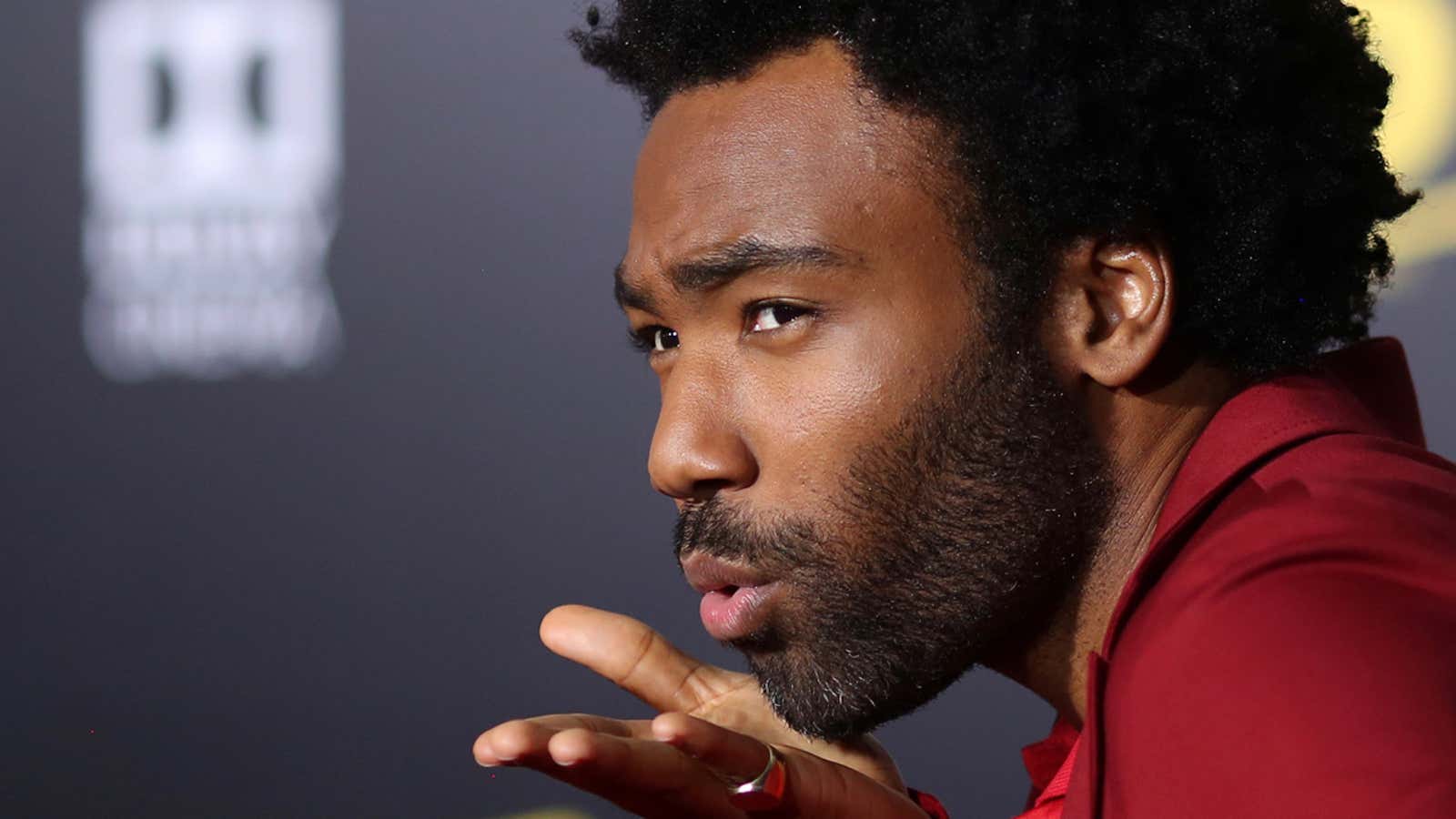By now, Childish Gambino’s This is America has been dissected countless times all over the internet and scoured for hidden meanings. In the last few days, the video’s choreographer has emerged as the creative force behind the Childish Gambino’s mesmerizing dance moves.
Rwandan-born Sherrie Silver constructed a dance sequence that was not only central to the video for This is America, but to a debate on the role of pop culture in a world mired in political and social controversies.
The 23-year-old is also one of the smiling uniformed children who follow Glover’s every move even as the world around them falls apart. In the layered messaging of the video, the dancing has been seen as a distraction from the violence and disturbing symbolism all around Glover’s musical alter-ego Childish Gambino. Sherrie, however, sees it as a “contrast.”
“There are a lot of dark themes in it, so they wanted us to be the light of the video,” Silver told Pigeons and Planes. “You know how kids are innocent and kind of unaware of what’s going on? We were there to smile and bring joy to everyone watching it, because the background is bringing so much darkness and reality.”
Silver’s moves bring a tension, as Aida Amoako explained in The Atlantic, to the video that everyone watching it has struggled with: do you bop along to the dancing children or are you frozen in horror to everything happening around Glover and his troupe of dancers? Silver goes further by almost recreating the various viral youtube videos of African children breaking down the latest dance moves in dusty backgrounds.
Silver was specifically instructed to include the South African dance the gwara gwara, which went from viral hit to Grammy stage thanks to Rihanna. Silver, who left Rwanda as a toddler in 1999 and travels there often, also brought in influences from around Africa.
There are gyrations from Angola, Ghana’s alkayida and an exaggerated walk in which you “imagine you’re walking into a party,” which she borrowed from Côte d’Ivoire. When you see Glover’s hips twist from side, his hands grasping wide, it’s the Azonto, also from Ghana. When his legs twist over each other as he steps forward, and his upper body seems to be falling around the screen, that’s the Shoki from Nigeria.
She also created her own dance, the “nziza” (meaning good in Kinyarwanda) in which you shake your shoulders and pause to pick something up. There are also nods to urban America with the nae nae and BlocBoy JB’s “shoot” dance. This week, Silver released a step-by-step tutorial of some of the dance moves.
These are not dances with deep spiritual meanings, but rather they’re the most prolific forms of creative expression for young Africans right now. That has since evolved into a professionalization of these dances, as tutorial videos crop up on these very dances and professional choreographers increasingly incorporate them.
Silver, whose philanthropy in Rwanda focuses on children, was brought in because of her ability to work with young dancers. Interestingly, Glover’s team discovered her when one of their nieces was trying to learn Silver’s moves through her Youtube videos.
